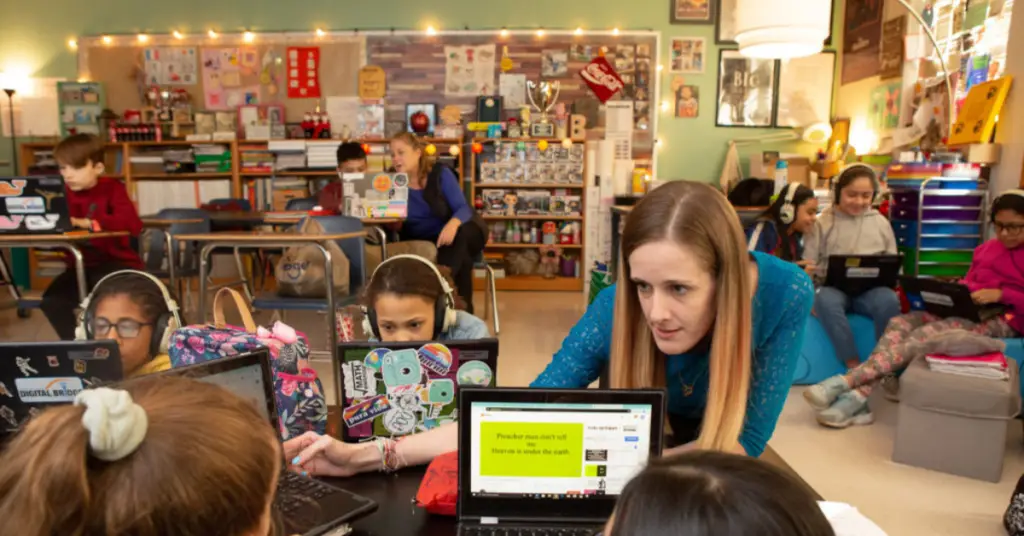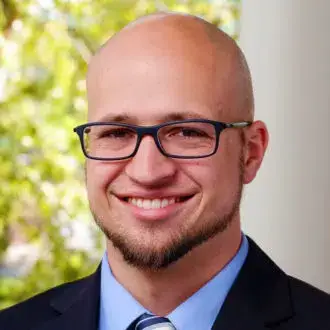This article was originally published on Ed Post.
After three disrupted school years, America’s K-12 learners collectively have significant unfinished learning and unmet mental health needs. While educators are working hard to help their students, our school systems simply aren’t designed to address gaps this large.
The urgency to address the wildly disparate and varying needs of today’s students offers an opportunity to encourage approaches to teaching and learning that measure students’ progress while tailoring teaching and support to their individual needs.
State leadership is necessary to help teachers and school leaders make these shifts. Educators need flexibility to decide how students use their time and how learning is measured. And they need support transforming the way their schools operate.
This is why the Center on Reinventing Public Education, a research organization at the Mary Lou Fulton Teachers College at Arizona State University, and KnowledgeWorks, an education nonprofit, support schools, districts and states shifting toward student-centered practices.
Adopting a New Approach
These practices are sometimes referred to as mastery-based learning, competency-based learning, proficiency-based learning or personalized learning. At their core, they strive to help all students increase their ownership of the learning process, progress through content at their own pace and receive timely, actionable and individualized support to ensure they achieve mastery.
In contrast, traditional schools are designed around a large and rigid set of course or grade-specific expectations. Learners progress on fixed-time intervals. And their instruction is delivered by a single teacher, in a single classroom of 20 or more students.
Our research at CRPE suggests this design isn’t working well for many children. For almost three years, we’ve been closely studying school districts’ responses to the pandemic and the effectiveness of their recovery efforts.
In our recent study on efforts to tackle learning loss, district leaders told us it’s been virtually impossible to accelerate learning and provide individualized support to many students in one class, in part because they have academic gaps in different areas.
Attempting to catch students up as a large group cannot accommodate the varied emotional and academic consequences each of them have experienced – nuance we detailed in our national State of the American Student report last fall. In it, we offered a “roadmap to recovery” with ways education leaders could address those needs.
Taking such steps could potentially stave off some of the steep, future financial losses economists have predicted for individual students who were poorly served before the pandemic and who fell even farther behind during it.
States Must Take Action
How can states chart a path toward more individualized learning?
Every student, parent and educator should have a clear understanding of what students have learned, missed or haven’t yet mastered. Students should be offered a variety of ways to demonstrate what they know and can do. Schools should make it easier for teachers to give students individualized support by making staffing and schedules more flexible.
The good news: some state policymakers have encouraged student-centered approaches. We can learn from their work, which includes:
- Setting a vision. States can set or support a vision for individualized learning pathways. They can specify target outcomes for students that serve as guideposts for schools and districts. States can also support local communities as they codify their own well-rounded graduation goals, often referred to as portraits or profiles of a graduate. Nationally, at least 15 states, including Utah and Washington, have published this type of resource. States should convene parents, educators, employers and other stakeholders to create such visions for what students and their communities need from schools.
- Giving credit for all learning. Students’ experiences during the pandemic demonstrated that learning need not be confined to a school building. Offering more engaging, joyful learning experiences will require providing more ways for students to earn course credits outside school. This can mean giving schools flexibility to determine when and where they offer learning opportunities, or it could mean creating more mechanisms for students to earn credit through experiences like work-based learning. At least 13 states have policies that allow students to receive course credits for learning outside of school, such as New Hampshire’s Learn Everywhere program.
- Encouraging innovation. Even when schools and districts are eager to innovate, they may not have the flexibility or the resources to pursue new education approaches. To address this, at least 31 states established innovation schools or zones to allow educators to design student-centered education approaches, while 44 offer waiver authority that allows schools or districts to request flexibility from state requirements. States such as Illinois and South Carolina are also helping schools and districts understand flexibilities in state law and how to take advantage of them.
- Building networks. Schools and districts often benefit from working together with like-minded educators, and states can help connect them to share ideas and disseminate best practices. Idaho and North Dakota have established statewide networks of schools and educators, while in Kentucky the Department of Education is leading cohorts of districts to design new approaches in collaboration with their communities. These networks can help states commission research on innovative practices and share proven strategies.
- Rethinking assessments and accountability. Despite the constraints in federal law, states and districts have some flexibility in their assessment and accountability policies. At least 25 states permit graduation requirements to be satisfied through student-centered assessment options, and 39 allow students to receive course credit based on such assessments. States can also leverage federal programs to experiment with new types of statewide achievement tests. For example, Massachusetts is developing a new approach to science assessment in which students would demonstrate their mastery by engaging with simulations of real-world science scenarios.
The pandemic and school closures amplified the challenges in our K-12 systems: growing gaps between the highest- and lowest-scoring students, a mounting mental health crisis and far too many students with disabilities and complex needs falling through the cracks.
They also underscored perils of an inflexible system designed for sameness. States must take note and continue building structures that allow educators to respond to each student’s individual needs, and ensure every student graduates with the intellectual and social foundation they need to thrive.





